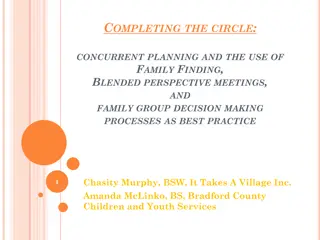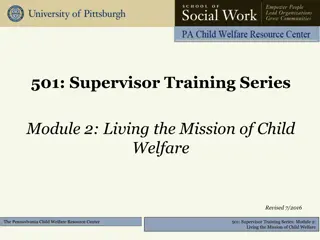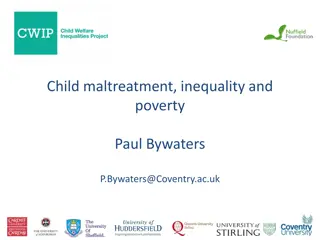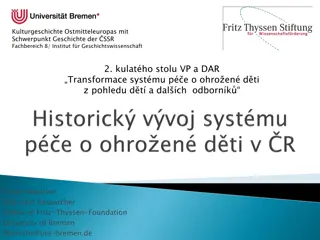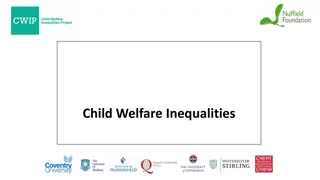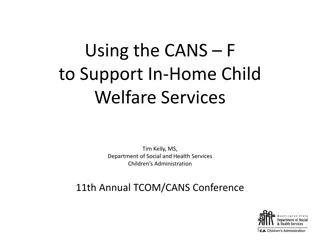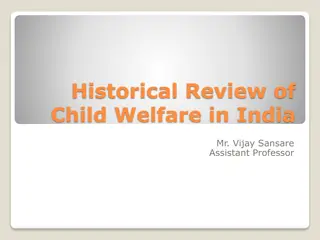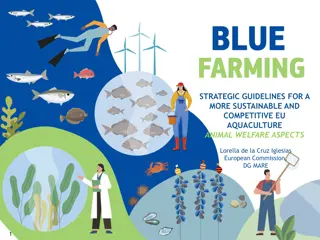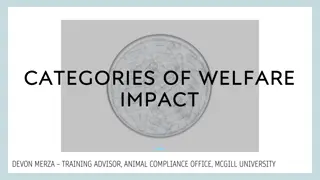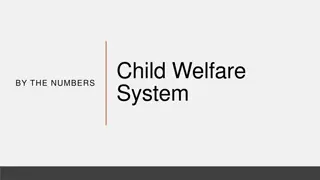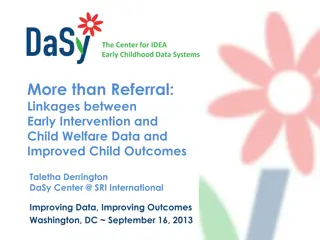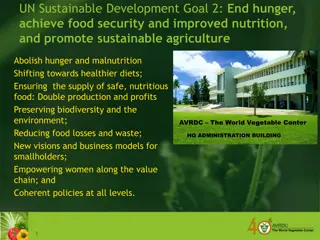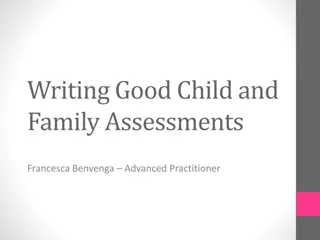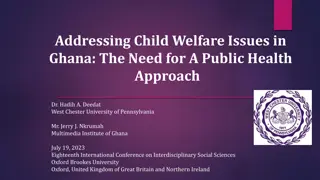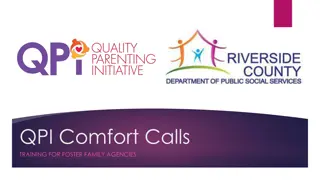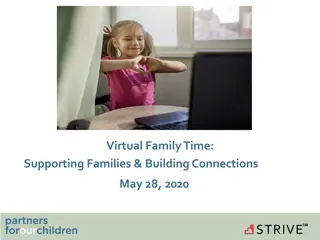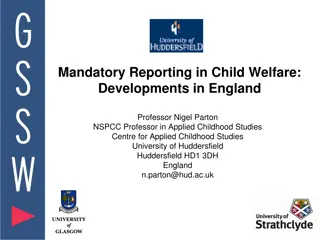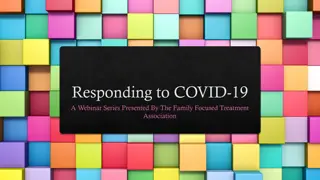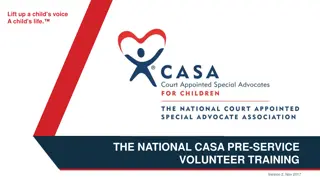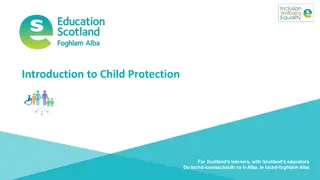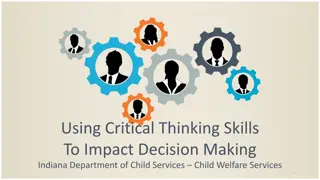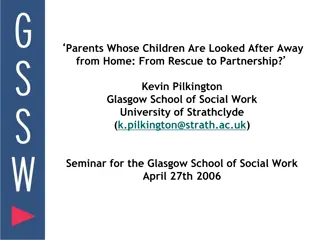Transforming Child Welfare: Ending Institutionalisation for Better Outcomes
Addressing the European problem of one million children in institutions due to poverty, ethnicity, and disability, the solution involves strengthening universal services, providing targeted community-based support, and promoting substitute family care. Moving children from institutions to foster care leads to positive changes in development and behavior. However, challenges include budget constraints, limited placement options, and a focus on buildings rather than essential services, highlighting the need for systemic reform.
Download Presentation

Please find below an Image/Link to download the presentation.
The content on the website is provided AS IS for your information and personal use only. It may not be sold, licensed, or shared on other websites without obtaining consent from the author. Download presentation by click this link. If you encounter any issues during the download, it is possible that the publisher has removed the file from their server.
E N D
Presentation Transcript
Ending institutionalisation Ensuring better outcomes for children
A European problem One million children in institutions in the European region due to poverty, ethnicity, disability Institutionalisation causes severe harm to the health and development of children Outcomes are extremely poor 10 times more likely to be trafficked; high levels of suicide, criminality, involvement in prostitution
The Solution Strengthened/more accessible universal services (community health and education) A range of targeted community based services that support the family A continuum of substitute family care Specialist residential care in small group homes for minority of children with complex needs Changes in attitudes society, politicians, professionals Reinvestment of resources
Changes in development when moved from institutions to foster care
Changes in behaviour on moving from institution to foster care
Challenges and pitfalls Getting from where we are now to where we want to be negative unintended consequences Setting target for 50% reduction - easy to place children (cheaper services) - reduce staffing and budget - amalgamate institutions - inappropriate placements and trauma - reduced overall budget spent on children - insufficient funding available for children with disabilities
Challenges and pitfalls Limited placement options - continued reliance on too much residential care (expensive services, poorer outcomes) - insufficient focus on family support - reform considered too expensive
Challenges and pitfalls Focus on buildings - inappropriate use of buildings for new services - costly investment in such buildings - poor outcomes for children
Challenges and pitfalls Insufficient funding for the whole reform process - results in partial reform usually the most vulnerable children are left behind - running two parallel systems reform is seen as too expensive - overall numbers in care rise - need for proper costing of reform and understanding of cost benefit
Challenges and pitfalls Statistics disguising the real situation - some children not included in statistics on institutionalisation therefore no plans for them - over-estimation or under-estimation a challenge for planning for future need - numbers in institutions do not show the dynamic flow through the system
Challenges and pitfalls Different message and priorities from international donors and policy makers - conflicting reform programmes - inefficient use of funding - increases resistance to reform
Admissions/year per 10,000 of child population 30 25 25 20 18 15 Per 10,000 10 9 5 5 0 England Bulgaria Montenegro Sweden
Number of children in residential care/10,000 90 85 80 70 60 50 Per 10,000 40 30 20 20 20 10 10 0 England Bulgaria Sweden Montenegro
GDP per capita (USD) 40,000 37,904 36,495 35,000 30,000 25,000 20,000 GDP per capita USD 13,929 15,000 13,332 10,000 5,000 0 United Kingdom Bulgaria Sweden Montenegro
Cost per child per year of different forms of care 200,000 177,823 180,000 160,000 140,000 120,000 109,590 Residential care 100,000 Foster care At home with support 80,000 60,000 46,181 37,981 40,000 14,828 20,000 4,100 - Sweden cost/year UK cost/year
Under-estimated need in DI Communication strategy Management structure and resources Professional development Transitional costs Community involvement Self-advocacy Partnership with parents Frontline social work
Contacts georgette.mulheir@lumos.org.uk www.lumos.org.uk


